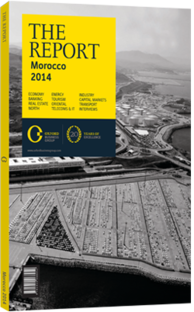OBG talks to Ali Berbich, Chairman of the Management Board, Zalagh Holding

Interview: Ali Berbich
What growth prospects do you expect for poultry consumption throughout Morocco?
ALI BERBICH: Over the past decade, domestic poultry consumption has increased by an average of 6-7% per year, reaching 17 kg per capita in 2014. This is similar to Tunisia, but still lower than in southern Europe, where per capita poultry consumption is around 26 kg per year. We have conducted market studies in Jordan, a comparable non-hydrocarbons-based economy, where poultry consumption is around 22 kg, a level Morocco should be able to reach in the short term. In general, there is a strong correlation between GDP growth and chicken consumption, which is why we reckon there is still margin for expansion. We predict a 7% growth rate in terms of production and consumption for the poultry sector over the next few years.
What niche markets can be targeted by agriculture sector players to improve export revenues?
BERBICH: There is no real prospect to export meat to Europe, as the EU has closed its fresh meat market for sanitary reasons. However, the Middle East can be an alternative outlet for exports and allow us to take advantage of our halal meat label. Furthermore, West African markets are still small, but there is room for new companies to boost their exports to these countries, which are posting double-digit annual growth but which still have limited local poultry production capacity. These markets have been targeted for years as an outlet for our exports but now we are considering establishing an in-situ poultry breeding farm in order for us to take advantage of the growing demand.
What can be done to foster improvements in sanitary standards in the poultry segment?
BERBICH: Considerable efforts have been made by the authorities to better organise poultry breeding farms in Morocco. This has largely been done through the implementation of a system of authorisations that obliges farmers to comply with quality, including the implementation of enclosure walls, pits for carcasses and a minimum distance between farms.
More broad-reaching legislation has also been implemented to professionalise the whole supply chain in terms of transportation and by obliging the restaurant and catering sectors to buy their poultry through industrial slaughterhouses. Nonetheless, due to social and cultural reasons, we still have to raise awareness amongst end-customers about the importance that product traceability has on their health and safety.
The government’s Green Morocco Plan has also played a role in upgrading the country’s poultry segment by subsidising investments in the modernisation of breeding farms, such as the installation of pad cooling. Furthermore, the aggregation system has been instrumental in developing agreements with small stockfarmers, more efficiently integrating our supply chain and improving overall quality standards. In that respect, we have been able to select well-equipped stockfarmers in order to secure reliable supplies of turkeys.
To what extent has the sector been affected by recent volatility in grain prices?
BERBICH: Corn and soy represent more than 80% of the animal feed composition. At the same time, almost all of these two commodities are imported, making the domestic poultry sector extremely sensitive to international price fluctuations.
From the demand side, new technologies such as ethanol extraction have radically transformed the sector by introducing new products that rely on grains, while demand from India and China has risen steadily in line with population and economic growth. In terms of supply, meteorological conditions play a key role, for example the US drought in 2010-11 caused grain prices to skyrocket. As of late 2013, grain prices have decreased and the poultry sector is now waiting for the next US harvest results in order to opt for stocking or destocking. To this end, it is very important to have a good read of the international market and try to anticipate changes.
You have reached the limit of premium articles you can view for free.
Choose from the options below to purchase print or digital editions of our Reports. You can also purchase a website subscription giving you unlimited access to all of our Reports online for 12 months.
If you have already purchased this Report or have a website subscription, please login to continue.

